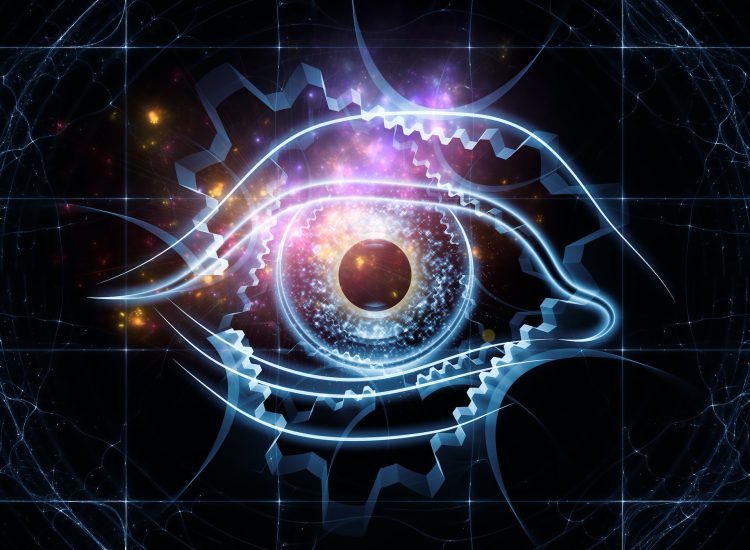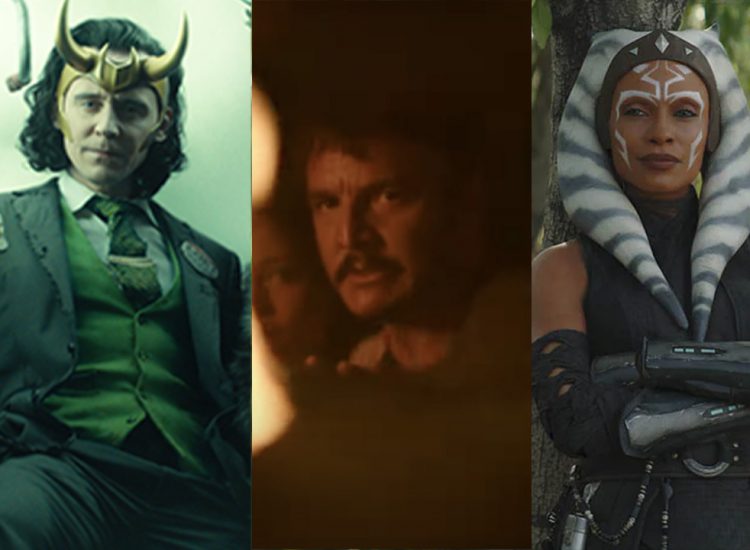Targeted on a quartet of mismatched characters compelled to dwell collectively by circumstance, “Crimson Dwarf” is a state of affairs comedy in its purest kind. The factor that units it aside is that stated state of affairs is someplace in the course of deep area, three million years sooner or later on a dilapidated, city-sized spaceship Crimson Dwarf, arguably one of many coolest spaceships in sci-fi.
For all of the gags and unashamed silliness, nevertheless, the present has been constructed on stable science fiction foundations because it first materialized on the BBC in 1988. With “Physician Who” on hiatus between 1989 and 2005, “Crimson Dwarf” turned the best profile sci-fi present on British T.V., and writers/creators Rob Grant and Doug Naylor continuously got here up with ideas each bit as good as these encountered by Jean-Luc Picard and co in “Star Trek: The Subsequent Technology.” That intuition for pushing the boundaries of the ultimate frontier has continued since Grant departed the present following 1993’s collection VI.
Under we have pulled collectively 10 of probably the most refined – and unconventional – sci-fi concepts from “Crimson Dwarf”‘s epic 35-year historical past. And, it is value noting that they’ve carried out all of it with none alien visitations…
Nevertheless, if you wish to get your fill of creatures from outer area, then take a look at the perfect sci-fi motion pictures and finest T.V. reveals of all time – you will not be dissatisfied!
1. Holograms and onerous mild
Rimmer will get became an excellent hero due to a diamond mild drive. (Picture credit score: BBC)
It is a daring transfer to bump off certainly one of your lead characters in your debut episode, however the present had the perfect approach again for Crimson Dwarf second technician Arnold Judas Rimmer. After his shoddy restore work brought on the deaths of all his crewmates, he was resurrected as a hologram to maintain Dave Lister, the final human within the universe, firm – seven years earlier than “Star Trek” launched a holographic crew member (the Physician) of its personal in “Voyager.”
In early seasons, Rimmer was unable to work together with stable objects, however the introduction of a “onerous mild” emitter in “Crimson Dwarf VI” episode “Legion” gave him bodily kind, emulating the stable mild present in “Star Trek”‘s holodecks, and making life lots simpler for actor Chris Barrie. Rimmer obtained one other improve in 2020’s feature-length “The Promised Land,” due to a “diamond mild” drive that briefly turned him right into a superhero. This was a superlative evolution with one minor flaw – his battery life was shockingly dangerous.
2. Three million years of evolution
These feline humanoids are referred to as Felis sapiens. (Picture credit score: BBC)
“Crimson Dwarf” could have steadfastly prevented shut encounters with aliens over its 35-year run, nevertheless, that does not imply it hasn’t created new species. When Lister awoke from his three-million-year keep in stasis within the first-ever episode “The Finish” – punishment for his refusal to give up his pet cat, Frankenstein, to the authorities – he was launched to a shallow, useless humanoid advanced from that exact same feline.
We subsequently realized that, within the many millennia since “Cloister the Silly” was frozen in time, these Felis sapiens had developed their very own society, fought holy wars, and subsequently deserted Crimson Dwarf to search out the promised land of “Fuchal” (aka Fiji). Cat was a kind of left behind, although the boys from the Dwarf did run into extra of the species in “The Promised Land.”
3. Synthetic lifeforms
Lister speaking to the Psiren within the type of Pete Tranter’s Sister, his childhood crush. (Picture credit score: BBC)
One other approach “Crimson Dwarf” has deftly sidestepped its “no aliens” rule is by packing the universe with quite a few kinds of synthetic beings. Many of those are genetically engineered life kinds (often known as “GELF”s within the present) and have ranged from customary sci-fi humanoids to monsters that feed on feelings (polymorphs) and shapeshifters (the pleasure GELF “Camille,” the Psiren of “Psirens”).
The crew have additionally encountered a number of cyborg Simulants (often notable for his or her passionate dislike for people) and a large genetically-engineered “despair squid,” whose ink may induce mass hallucinations (“Again to Actuality”). Maybe probably the most intriguing lifeform, nevertheless, was Legion, a “gestalt entity” with the flexibility to mix any thoughts in shut proximity right into a being with an mind higher than the sum of its elements – who else may have created the marvel of anti-matter chopsticks?
4. Digital actuality
Rimmer, Cat, and Lister carrying synthetic actuality headsets. (Picture credit score: BBC)
The place “Star Trek: The Subsequent Technology” typically used the holodeck to get away from all of it, “Crimson Dwarf” has historically most popular digital actuality. Many years earlier than metaverses turned modern, the present was strapping the gang into synthetic actuality headsets, a few of which appeared extra like bicycle helmets than something just like the leading edge tech of the perfect VR headsets we’ve got at present.
From the game-gone-wrong of “Higher than Life” to “Gunmen of the Apocalypse”‘s Western-themed assault on a pc virus,the present has continuously explored the comedic potential of transporting your self to a different world. Better of the bunch, nevertheless, was “Again to Actuality,” during which the aforementioned despair squid brought on the crew to hallucinate that they’d spent the final 4 years taking part in a complete immersion videogame referred to as “Crimson Dwarf.” It is probably the most emotionally highly effective episode within the present’s historical past – and no, Cat doesn’t need to be Duane Dibbley.
5. The backwards universe
Within the “Crimson Dwarf” episode ‘Backwards’, all the things is actually backwards, even the textual content. (Picture credit score: BBC)
On one stage, a world the place time runs in reverse is solely an excuse for gags that might be not possible in another sitcom – it is best to not suppose too onerous about what going to the bathroom would contain. Nonetheless, “Crimson Dwarf III”‘s “Backwards” was additionally primarily based on the ingenious sci-fi premise of an anti-universe, as Rimmer, Lister, the Cat, and repair mechanoid Kryten (by this level a daily member of the crew) landed on a planet the place time’s arrow had been flipped. Christopher Nolan’s “Tenet” riffed on comparable concepts in 2020, although it was nowhere close to as humorous.
6. The Justice Area
Rimmer challenges Lister to commit a criminal offense while they’re trapped in a ‘Justice Area.’ (Picture credit score: BBC)
Science fiction loves discovering merciless and strange methods to incarcerate the worst of the worst, from “Superman: The Film”‘s two-dimensional Phantom Zone to “Escape from New York”‘s deserted Manhattan. However, few prisons are as ingenious as the power in “Crimson Dwarf IV”‘s “Justice,” the place committing any crime is not possible due to the location’s in-built Justice Area.
Any prison act you carry out will immediately be inflicted again on you – in different phrases, when Lister tried setting some mattress sheets alight, his personal jacket shortly caught on fireplace. Fortunately for the Dwarfers, they had been in a position to flip the jail’s distinctive safety measures to their benefit, once they goaded the ruthless simulant on their tail into blasting himself to smithereens.
7. The white gap
“Crimson Dwarf” toyed with the thought of anti-time three years earlier than “Star Trek” did. (Picture credit score: BBC)
Primarily based on the concept that each motion has an equal and reverse response (and, because it seems, there’s truly some real-life science behind the idea), the white gap the posse encountered in season IV regurgitated the time and matter sucked out of the universe by its extra well-known cousin, the black gap. Within the “Crimson Dwarf” universe, the idea was inevitably used as an excuse for some timey-wimey comedy – “What’s it?” “I’ve by no means seen one earlier than – nobody has – however I am guessing it is a white gap.” And repeat…
Nevertheless, there have been undoubted parallels with the anomaly that spewed anti-time into the universe in “The Subsequent Technology” finale “All Good Issues” (which debuted three years later). Certainly, it stays a disgrace that Jean-Luc Picard did not comply with Lister’s lead, taking part in pool with planets to completely seal the fissure. Trick shot!
8. The luck virus
Mr. Flibble’s very cross. You should not have run away from him. (Picture credit score: BBC)
What if a successful streak actually was infectious? Collection V episode “Quarantine” made the foolish however ingenious suggestion that luck was a tangible property (see additionally “Deadpool 2″‘s Domino) that may very well be handed on within the type of a “constructive” virus engineered by scientists.
Sure, it was extremely handy when Lister used a literal dose of excellent fortune to enter the right door code to flee quarantine, and when he discovered all the right elements to defeat a Rimmer pushed insane by a nasty holo virus (alongside Mr. Flibble, his evil penguin hand puppet) . Even so, deus ex machina has hardly ever been so humorous, or felt so justified when it comes to the plot.
9. Lister’s parentage
Lister flirting with Kochanski. (Picture credit score: BBC)
Should you thought “Again to the Future” (the most effective time journey motion pictures of all time) had cornered the market on time travel-induced Oedipal complexes, you’ve got by no means seen “Crimson Dwarf.” In collection VII’s “Ouroboros” we realized why Lister had been left in a field below a pool desk as a child – and that he was truly his personal dad. To make issues much more complicated, it additionally turned out that Kristine Kochanski – the lady Lister has been infatuated with because the present started – was his mom, and that he was the one who’d left his youthful self in that Liverpool pub.
The entire scheme was a part of Lister’s future to kind an unbreakable circle in time – the ouroboros image represents a snake consuming its personal tail – to make sure the human race by no means turned extinct. It was additionally the explanation why Lister subsequently despatched himself a Father’s Day card yearly (“Fathers and Suns”).
10. Quantum entanglement
Cat and Kryten expertise quantum entanglement, the place they find yourself mirroring every others strikes. (Picture credit score: BBC)
Lots of “Crimson Dwarf”‘s most memorable sci-fi moments have come when the scripts have riffed on concepts born in real-life science and spun them out in weird new instructions – often within the title of getting fun.
Collection X’s “Entangled” paid homage to one of many extra esoteric ideas in modern physics, when a “quantum rod” from the S.S. Trojan’s drive system brought on Kryten and the Cat to expertise quantum entanglement on a macroscopic scale – and, in a fantastically choreographed sequence, they ended up mirroring their actions in good unison.
Author Doug Naylor’s interpretation of quantum concept in all probability would not stand as much as a lot scientific scrutiny, however, let’s face it, you could possibly continuously say the identical of “Star Trek”.












